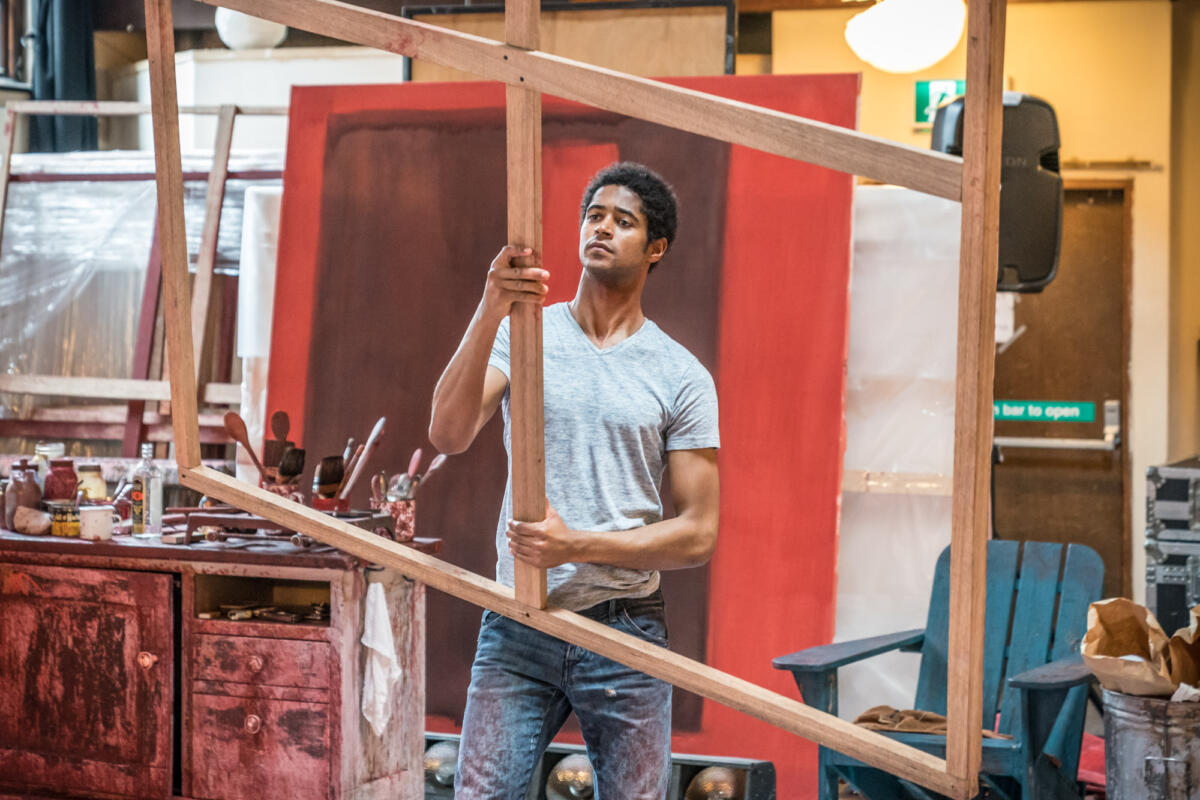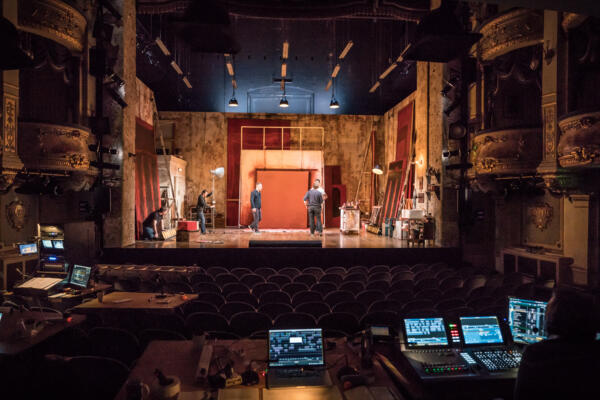Red | Rehearsal Diary
Red– Week One
Associate Director Josh Seymour provides a week‑by‑week summary of rehearsals for Red
Our initial week of rehearsals consists of making a first sweep of the play, moving speedily and allowing us to discover its general shape and begin asking questions to inform the detailed work that lies ahead. We begin our first day with a ‘Meet and Greet’, a chance for the full cast and Creative Team to be introduced to each other before rehearsals begin in earnest.

As we begin our first pass of the play’s five scenes, we notice the significance and eloquence of the moments of silence that Michael weaves into the action. The two characters, Mark Rothko and his new assistant, Ken, are both highly articulate, fast-thinking individuals, and the play’s dialogue is pacy and dense. The moments when we see the characters hunt for the right words to express what they think or feel gain more power because of their contrast with the verbose action around them. Similarly, the moments when the characters exist in silence – for example, when Ken is cleaning up the mess caused when Rothko has an explosion of rage – are filled with as much texture and clarity as when the characters are speaking, and allow the audience to witness the business of life taking place within an artist’s studio.

Whilst moving through the scenes, we stop each time a factual question emerges to research the answer – for example, who the painters are that Rothko refers to – or if there is a historical reference which we aren’t sure of. We stick up images on the rehearsal room walls – the work of other artists of the time to help remind us of the context in which Rothko sits, providing us with visual references to things which are mentioned in the text.
We also spend time working on the scene changes, which need to be precisely choregraphed to Adam Cork’s compositions. These scene changes function as the glue that holds the scenes together and provide a visual illustration of time passing. They also show the growing familiarity between Rothko and Ken, as Ken’s employment in Rothko’s studio continues across the months. As the timings of actions corresponding with musical shifts require careful specificity, and the scene changes are physically complex, we practise them several times across the week. This lets actors start to absorb them into their muscle memory and move towards Michael’s stated aim of having the scene changes look natural and effortless, despite their true complexity.

We end the week with our first attempt at the play’s central priming sequence, where Rothko and Ken prepare a canvas in advance of Rothko beginning to paint it in earnest. We workshop a kind of choreography where Alfred Molina and Alfred Enoch, playing Rothko and Ken, are tasked with physically responding to each other’s movements in the quest to cover the entirety of the canvas as efficiently as possible. We film this first attempt and watch it back as a group, discussing how the method of priming can be improved, before letting the paint-covered actors head off for a good wash and a well-earned weekend.





